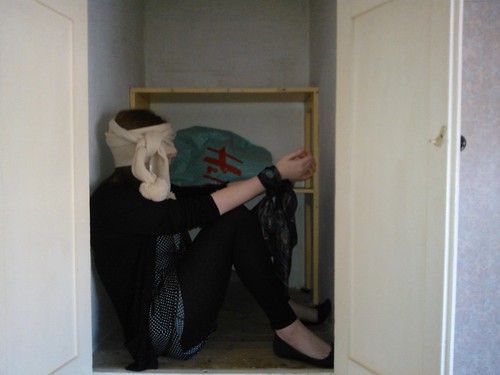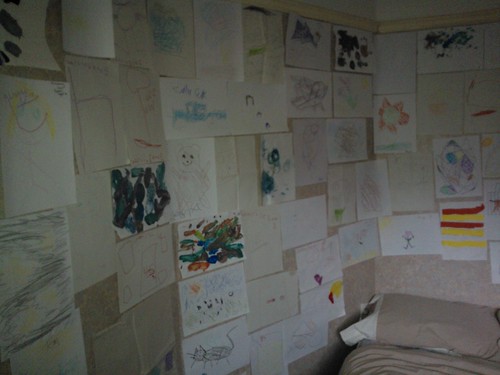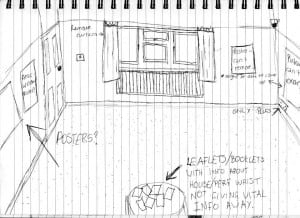When writing the narrative for the audience member who would be put into bed we thought it would be good if we tried to make it somewhat dreamlike, and comforting. We want the audience member to be given a sense of security from the words that were spoken, and the tone. We want them to feel safe. So in order to do that we decided to base our narratives on the theme of safety, on thoughts of protecting someone, and so the two of us ended up basing our narratives on our younger siblings.
It’s said that “In a rapidly changing world, time and memory are key concerns for contemporary artists… our lives our punctuated by objects, feelings and ideas that are endlessly retrieved and re-used.” (de’oliveria 2010) So therefore it would make sense that Jake and I would use our own emotions and memories to fuel a narrative that designed specifically to make the audience members feel protected. The narrative that I’ve written on is based on experiences I had when my younger brother and I shared a bedroom, and the nightmares/terrors he used to experience.
“Many under[stand] caring as a sibling practice that was integrally related to practices shaped by their pre-determined position in the sibling birth order hierarchy.” (Edwards, 68, 2006) and in my case it was no different. I am 3 and a half years older then my brother, and that difference in our age made me protective of my brother. It was my job as an older to sister to make his life hell, but to also protect him from anyone or anything else.
My narrative was based on a time when we had first moved to Canada, we were in a different country, we didn’t have any friends other than each other to begin with; and Aaron didn’t like his room. He was only young back then, I think about three years old, maybe four. He didn’t like the sound that the wind would make against his window; it gave him nightmares that made him wake up screaming. So our mother decided that we would share a room with each other, during the day we would make each other crazy, annoying one another, but when it came to bedtime I would remember that Aaron didn’t like the night, hated what he thought was hiding in the dark. “The images and emotions associated with the dream may haunt us throughout the day, sometimes for years. Nightmares prompt us to seek others. Who prefers to be alone after a nightmare? The fear and sense of dread is so intense as to be palpable.” (McNamara 2008 P1) So I suppose its little wonder that no matter what fallouts we had during the day, when I saw how fearful he was after a nightmare I would try and comfort him. I told him that when I sang to him it was a spell of some kind, that it would protect him. I sang to him for years, when we lived in Canada, when we lived in Abingdon and then when we moved to Grantham. Actually the last memory I have of singing him to sleep was when we lived in Grantham, I’d just started High School and Aaron had just started a new primary school, and I think that he was nervous.
So, when writing my version of the narrative that the ‘parent’ performer would be saying I tried to think about all of these emotions, tried to base it on the how I felt as an older sibling trying to protect and comfort a younger one. It won’t be able to comfort everyone who is put into the bed, we’ve found that many find putting the blindfold on, and being in bed with someone else whilst you’re wearing a blindfold disconcerting. Unfortunately, we don’t want the people being placed in the bed to realise what is happening with regards to the cupboard, we want the two experiences to be as separated from each other as the can be. Some people who are put into the bed won’t be able to let go of the fear they have that’s the result of one of their senses being taken from them. They won’t be able to relax, or to listen to the words that are being whispered into their ears. But I’m hopeful that for those who embrace the experience they will be able to understand the emotions and memories that have gone into the narrative; that they will be able to feel the sincerity behind the words that are being spoken to them.
Works cited:
De Oliveira, Nicolas, Nicola Oxley, Michael Petry (2003) Installation Art in the new millennium London: Thomas & Hudson. Ltd
Edwards Rosalind, Lucy Hadfield, Helen Lucey, Melanie Mauthner (2010) Sibling Identity and Relationships: Sisters and Brothers Abingdon: Routledge
McNamara, Patrick (2008) Nightmares: the science and solution of those frightening visions during sleep USA: Praeger Publishers.



